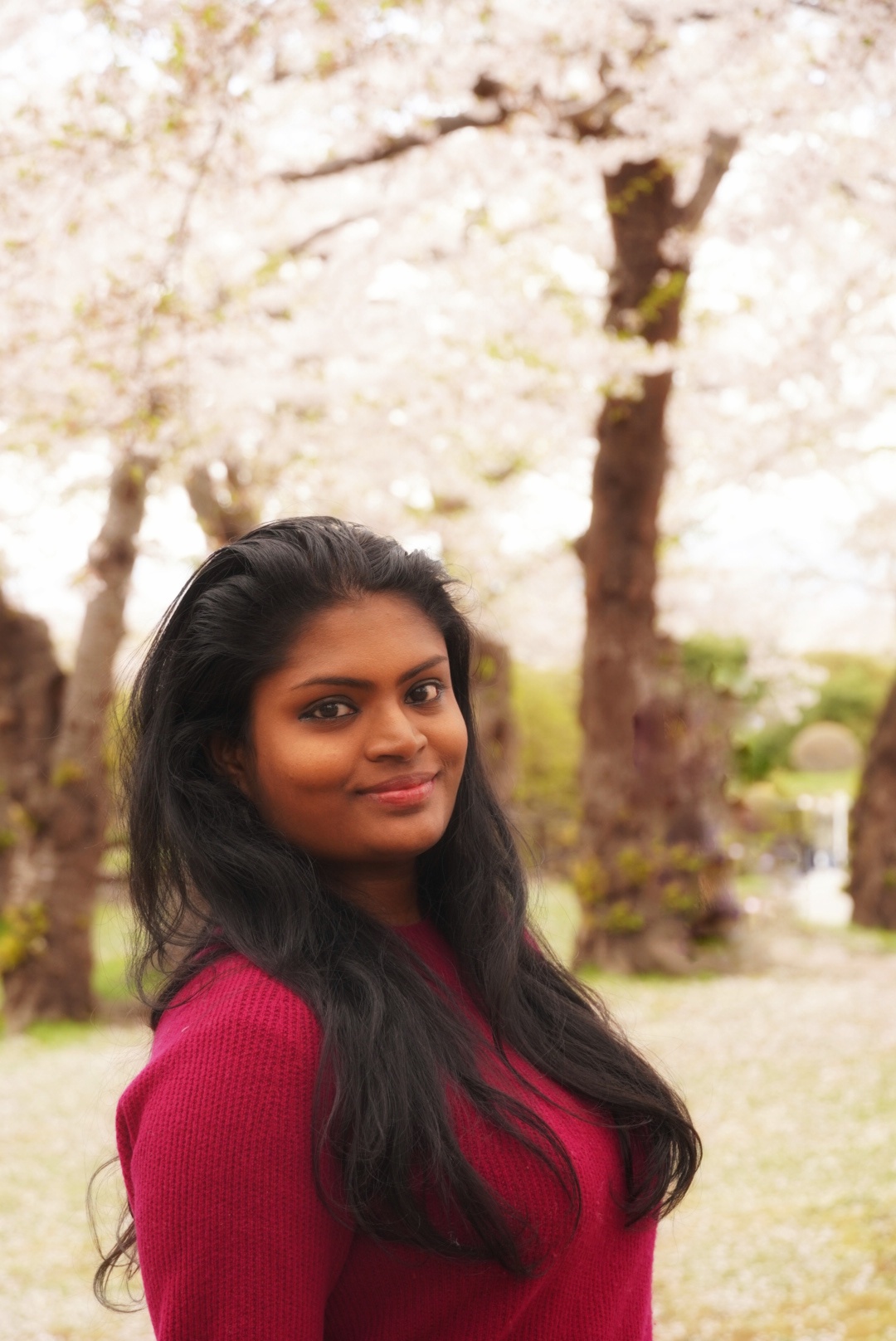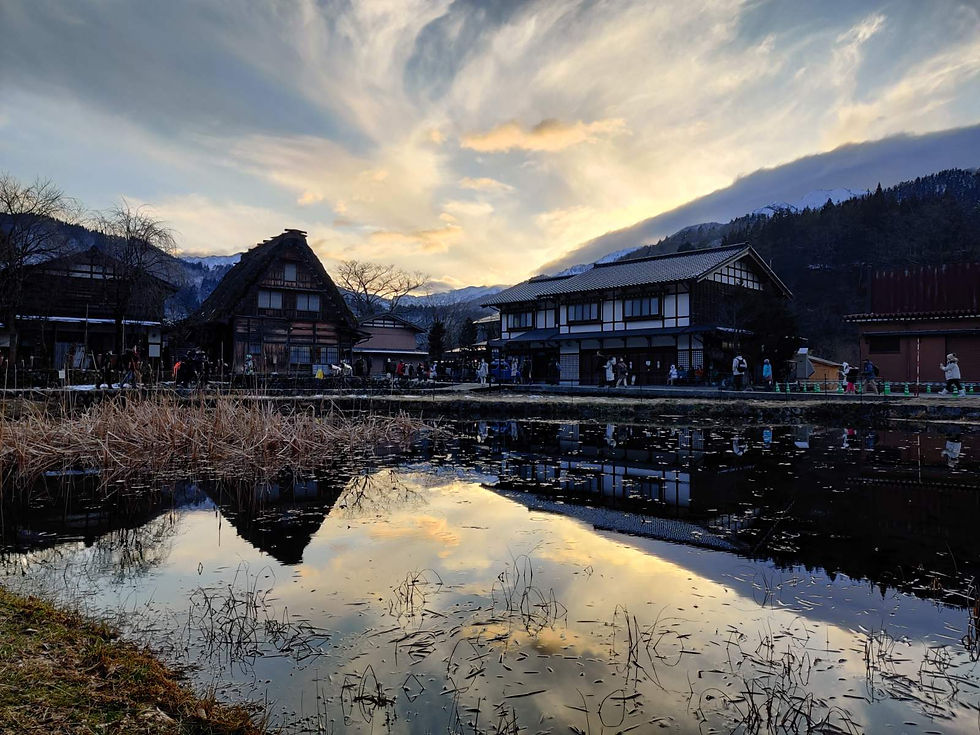Goshuin - A cherishable souvenir from the shrines
- mithra ravi

- May 30, 2021
- 5 min read
In November 2019, I went on a solo trip to Nikko to experience the fall foliage. I was exploring the lavishly decorated Toshogu shrine. I had enough time for the next itinerary of the day and was roaming leisurely around the place.

That's when, I noticed that there was a long queue, where every person in the queue was holding a small book in their hand. Completely unaware of what it was, I decoded the kanji on the board nearby. It read as "御朱印" - Goshuin. Then I googled for 'Goshuin' and got an uber level understanding of what it meant. The word "shuin" translates to "red seal" and "go" is for denoting it honorifically. I was observing it for a while and just to kill the time, I thought that I'll also buy it and stood in the line. That's how I got my first Goshuin and the first Goshuincho book

Having received my first Goshuin, I was excited for the rest of the day to collect more. That day, I just stopped at every other possible shrine. I was wondering why I was attracted so much to it and spontaneously recollected that I have an eye for calligraphy since childhood. I have even bugged my dad asking him to buy me a calligraphy pen set when I was a kid. Seeing my first Goshuin a million times, I learned more about its history and what it comprised of.
It is a distinctive momento given both in shrines and temples by kannushi or monks. The origin of goshuin is not very clear and one of the theories dates back as far as Nara period (710-794) and is regarded as a "proof of visiting /worshipping" a shrine/temple.
Each one of the shrine/temples has its own design of goshuin and a typical goshuin has the below

1) The name of the shrine calligraphed in black ink
2) The date that you visited
3) The word奉拝which means “to worship”
4) It might have two red stamps. The large red usually contains the name of the shrine/ temple
5) The smaller red stamp might be the enshrined deity / official symbol/motif
6) Additional symbols based on the seasons / festivals / locations etc.
There is a dedicated book where the goshuin is inscribed and it is called "goshuincho" and it also has a special bag along with it. The intricate beautiful designs on a goshuincho leave me awestruck. This is quite addicting and at times I get irresistible to own them. I have about 7 books as of now and out of which only about 4 are filled with goshuins. I also recently learnt that both sides of the paper in the goshuincho can be used for getting the stamps.

Slowly I started collecting Goshuin wherever I went. Being an avid traveler in Japan, I took my goshuincho whenever I went for a trip and became a travel tradition. I was on full zeal to get my pages filled with goshuins. Every time I went to a shrine/temple I searched for 御朱印授与所, the place where the stamps will be available.

On the go, I learnt more about the etiquettes on receiving a Goshuin. Here is quick guide on the procedure.

Step 1: Ask for "goshuin onegaishimasu" (御朱印おねがいします)
Step 2: Open the page on which you want to get the seal and handover the book to the person
Step 3: Some big shrines/temples may give you a token and ask you to wait
Step 4: Pay the amount requested. Usually, it is ~300 yen
Step 5: Receive the Goshuin with both the hands and with a gentle bow
One fine day, when I was talking about this hobby of mine to one of my friends, he told that his friend as well does this and some stamps cost about 1000 yen and maybe even higher! I was wondering why did it cost a lot and how did it differ from the ones I collect. That's when I searched in Instagram with the tags related to goshuin. I just got mind-blown to see the special, colorful, and amazing patterns of Goshuin that were available around. These are some of my collection.
Sometimes this hobby is very addictive. Rather than collecting the stamps when I find it during my travel, I began to travel to get these stamps. This activity of shrine hopping is called "goshuinmeguri" #御朱印巡り, a very famous hashtag in Instagram. Now, I have a whopping 70+ Goshuin collection, which is still a drop of water in the ocean of goshuins!

I even had some amazing experiences while I collected it. One such experience is, when I visited "Shorinzan Darumaji Temple". A reason must be written in a paper offered by the person-in-charge for it in the temple describing why this Goshuin is needed. A wish should be made along with it and the person will offer you the Goshuin after he does prayer to Darumaji about your wish.

Another experience is the DIY Goshuin, where all the required materials for stamping were present at Hill of Mount Buddha, Hokkaido temple and I was allowed to stamp the Goshuin by myself. I even made a video of it. Check it out!
Along this journey, I unveiled some interesting facts about goshuins.
1)Do not give Goshuin as a gift – It is a connection between the person who received it and the temple/shrine
2)There are two types of goshuins. One is, they write in front of you and the other is “kaki-oki goshuin” (書き置き御朱印) which are already printed and ready to distribute
3)The goshuins on the same shrines differ based on seasons/festivals/month specific and New year (初詣). These kinds of limited edition stamps are called "kikan gentei goshuin" (期限限定御朱印)

As a closing note, I want to express the fact that I'm very much glad to have come across this concept of goshuin during the time, I live in Japan. The actual fun is that it was a self-taught hobby and I explored the whole concept, all by myself! For many people in general, this hobby would have evolved as a religious/ spiritual journey, but I have a different perspective, I see it as my memories with Japan and its shrines. Japan being the home to innumerable beautiful shrines, I think goshuin is a special entity that connects my memories with the shrines I visited through words and images. A special connection indeed!
I'm sure that when I look back at this collection, at any point in time, I will feel all the good vibes, the magnificent shrines and temples of Japan had given me!

















Comments